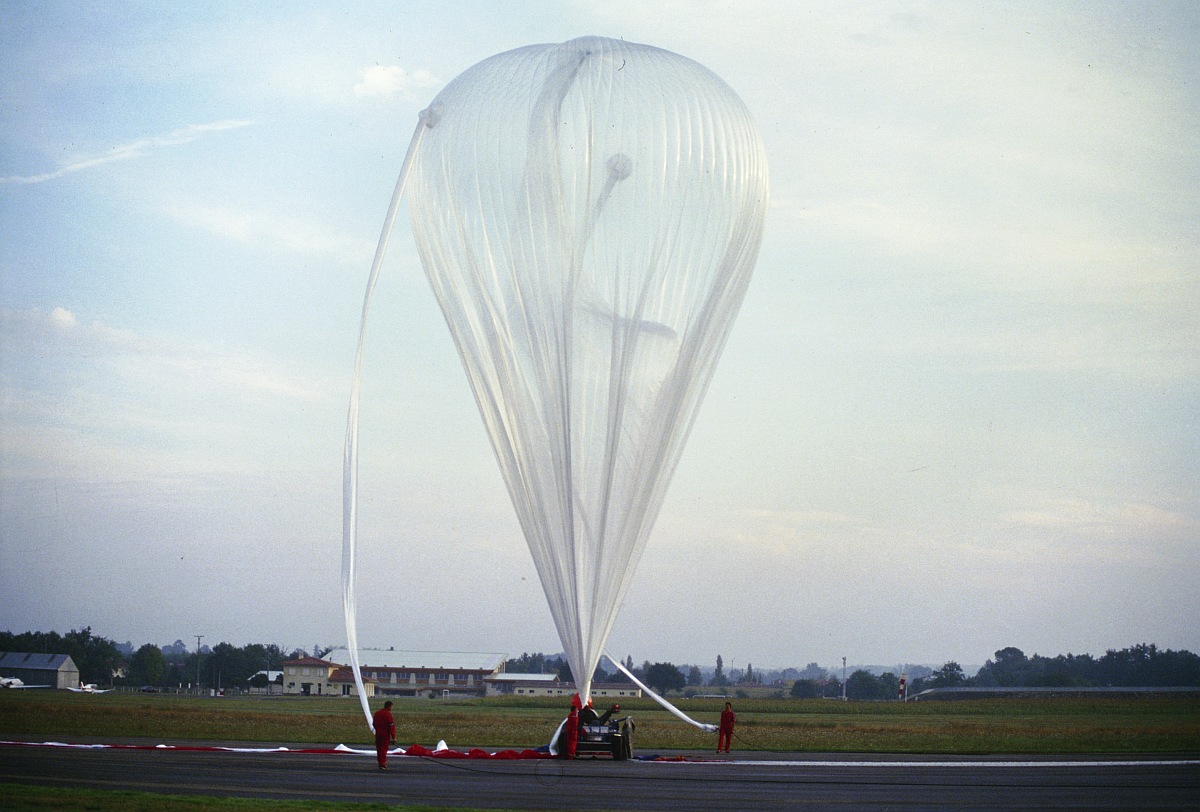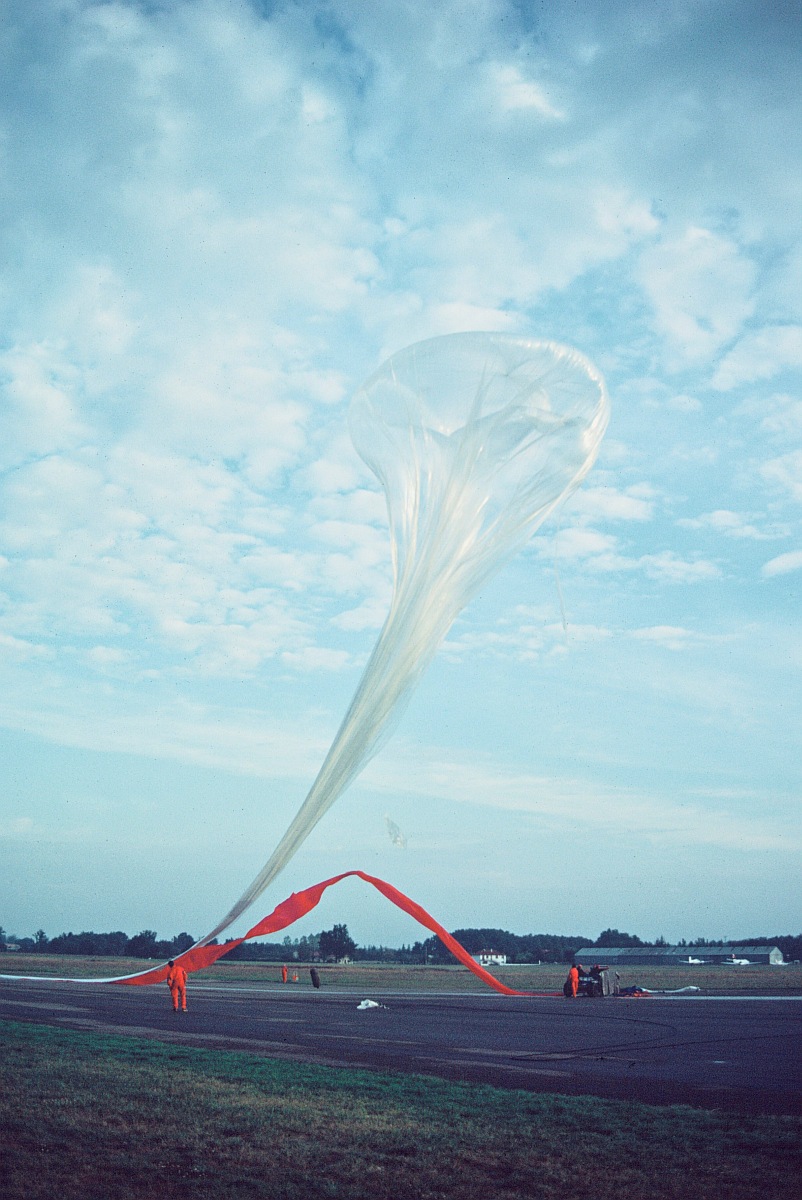Purpose of the flight and payload description
Télidat was the acronym for TÉLédetection Informatisée à Détecteur À Transfert de charges (french for computerized remote sensing with charge transfer detector) a remote sensing instrument developed by Garef Aerospatial, a french scientific club for young people who are passionate about space, electronics, renewable energies and new technologies. The members of the initiative create their own experiments, which are flown on small rockets or balloons. The TELIDAT experiment counted with support from CNES that provided the balloon, platform and managed the launch operations.
Althought remote sensing is generally performed from an airplane and using images on photographic film, Garef's approach was totally different, since the experiment was embarked on a stratospheric balloon and used modern techniques in electronics and computing. The innovation in the shooting method was obtained thanks to the realization of a camera designed around a CCD sensor (charge coupled device). This silicon-based component was very compact without requiring high voltages, unlike a conventional camera. The sensitivity of this sensor ranged from visible to near infrared. It was therefore planned to take images in these two domains of the spectrum.
All the processing was entirely digital: the signal from the camera was digitized, stored in a temporary memory, then retransmitted to the ground. Acceptance was carried out by a computer which recorded the results on hard disk and displayed the images in real time on a color screen. Subsequently, these images undergo computer processing to reveal the desired information. They were for example processed in false colors in order to bring out such a landscape in such a color and such another landscape in such another color.
The system was managed by a computer based on an 8-bit 6809 microprocessor with 4K of RAM and 4K of ROM internal memory. The telemetry was formed by a system of 80 parallel input/output lines with 32 analog channels and 1 PCM transmission channel (MIC) of 40 K bits/s. The image memory was 192K byte dynamic with 1MB/s write speed. The power at different voltages was supplied by a 24 Volt - 10 Ah battery providing autonomy of 10 hours.
Camera wasequiped with a 50 mm lens with aperture 0.95. The CCD image sensor had a matrix of 380 x 480 pixel as mentioned before operated in the visible and near infrared spectrum and used a servo-controlled mechanism to opening or closing the camera diaphragm according to the illumination.
The gondola provided by CNES was formed by a rectangular structure measuring 1 meter x 1 meter x 1.2 meters, made of aluminum. It was termally insulated from the environment using polystyrene 6 centimeters thick for a total mass of 168 kg. The gondola was stabilized in one axis toward the magnetic north.
Details of the balloon flight
Balloon launched on: 9/14/1986 at 8:34 local time
Launch site: Centre de Lancement de Ballons CLBA, Aire Sur L'Adour, Landes, France
Balloon launched by: Centre National d'Etudes Spatiales (CNES)
Balloon manufacturer/size/composition: Zero Pressure Balloon model 100z Zodiac - 100.000 m3
End of flight (L for landing time, W for last contact, otherwise termination time): 9/14/1986 at 12:18 local time
Balloon flight duration (F: time at float only, otherwise total flight time in d:days / h:hours or m:minutes - ): 3 h 30 m
Payload weight: 168 kg
Overall weight: 404 kg
External references
- Activité ballons sondes Garef Aerospatial website
93If you consider this website interesting or useful, you can help me to keep it up and running with a small donation to cover the operational costs. Just the equivalent of the price of a cup of coffee helps a lot.



